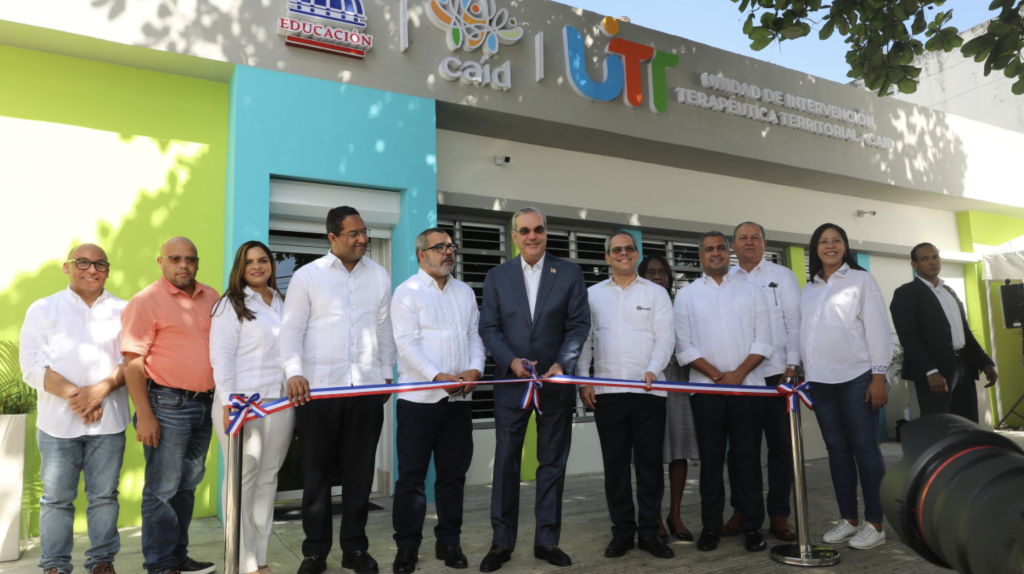
The Abinader administration announced the opening of a first Unidad de Intervencion Terapeutica Territorial (UITT) that will be offering care and early intervention for children with autism, Down syndrome or cerebral paralysis. The services have been available at the large CAID facilities, but these have a long waiting list, the Presidency reports. Instead of expanding CAID facilities, the Abinader administration is focusing on the smaller UITT centers.
The first UITT facility opened in Ensanche Luperon and has capacity for 48 children. It seeks to serve populations in Arroyo Hondo, Cristo Rey, Ensanche Kennedy, Ensanche La Fe and Ensanche Espaillat. A second unit will open in coming weeks in Sabana Perdida.
The government says the plan is to install 20 more of these units nationwide.
As reported in El Caribe, the Center for Comprehensive Care for Disability (CAID) is facing a crisis as its therapy waitlist has ballooned to 3,234 families. Already children from 2,632 families currently receive care at the government special needs institution. This dire situation was brought to light by journalist Fernando Quiroz, coordinator of the Autism Dialogue Table, who released a report on the state-run facility providing care for children with autism, Down syndrome, and cerebral palsy.
According to Quiroz, the main CAID center on Luperón Avenue in Santo Domingo has 1,159 families awaiting therapy services as of February 2nd. The Santiago branch, intended to serve other Cibao provinces, has a waitlist of 1,201 families. In Santo Domingo East, the San Vicente de Paul Avenue location has 578 families waiting, while the San Juan center has a waitlist of 296 families.
The inclusion activist described the situation as desperate, noting that the most in-demand services across the CAID network include speech and language therapy (2,606 families waiting), occupational therapy (2,490), behavioral intervention (1,320), pedagogical support (552), early intervention (481), and complementary therapies (470).
Quiroz also highlighted the economic background of CAID users, stating that 5 out of 10 families are classified as middle class, 2 out of 10 as upper class, 2 out of 10 as moderately poor, and 1 out of 10 as extremely poor, based on CAID authorities’ reports.
“CAID is an institution of service excellence with international recognition, but its capacity is overwhelmed by high demand. Families have to wait up to four years to be served, so urgent intervention by national government authorities is needed,” Quiroz stated.
Read more in Spanish:
Presidency
El Caribe
CAID
13 February 2025

